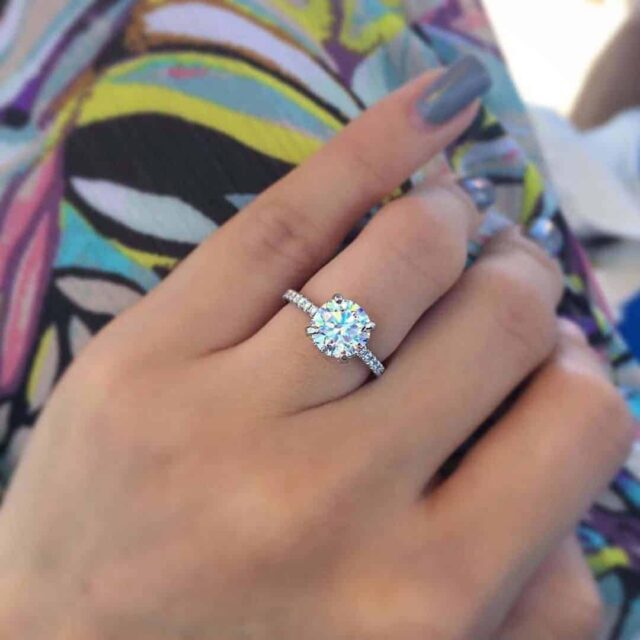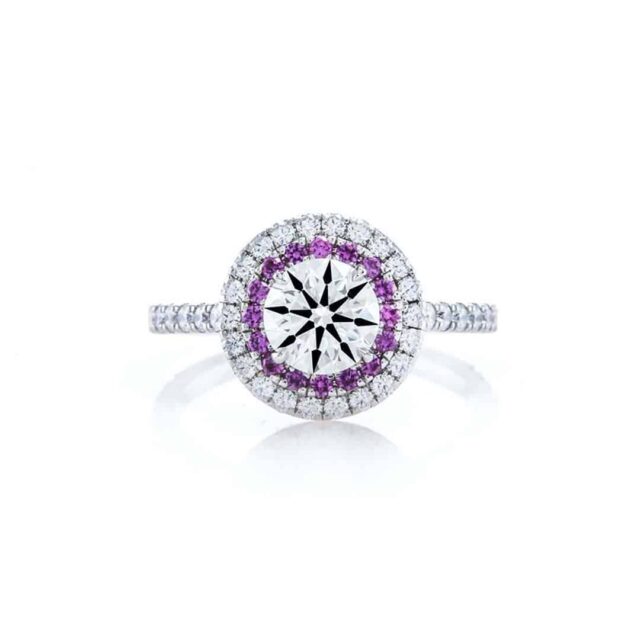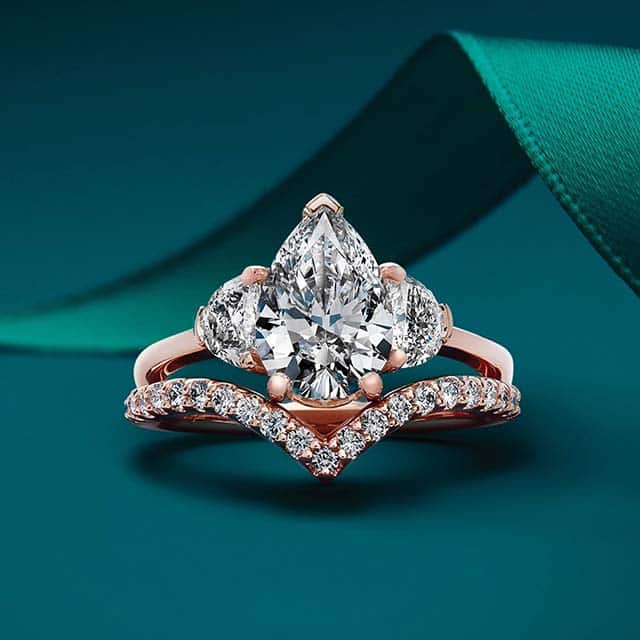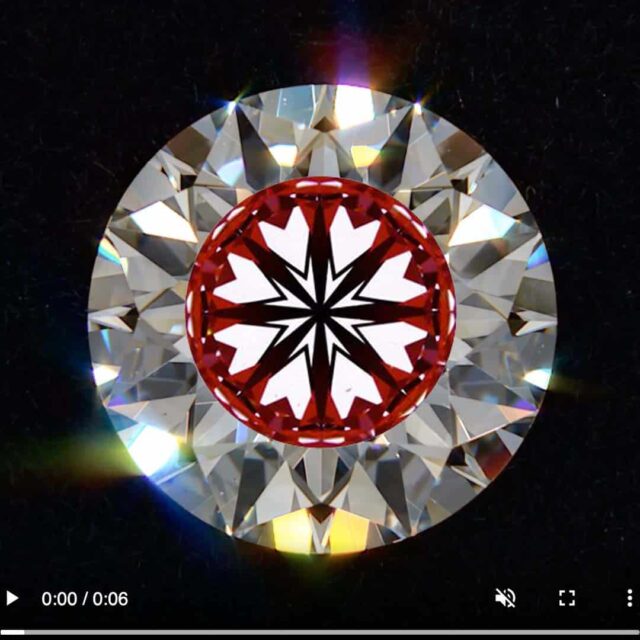Before you set out to make your diamond look bigger, you might first ask yourself whether size matters?
But, of course, that is a philosophical debate that coincides with the true meaning of an engagement ring.
Arguably, size does matter, if only from a purely psychological perspective. Perhaps that is why one of the first questions women always ask is "How BIG is it?" when a friend shows off her new ring.
Well, it's either that or they're just being catty! Perhaps it's a bit of both. Women are fascinating creatures, are they not?
In contrast, some people say that bigger is not always better. One famous adage suggests, "It's not the size, but how you utilize." Consequently, the late Joan Rivers might argue that statement could apply to more than the size of your rock.
With regards to diamonds, size is primarily a matter of perception. As that may be, here are some ways to make a diamond look more substantial than the carat weight.
Diamond and Jewelry Coupons & Sales:
* See individual sites for terms and conditions.
A Brilliant Source of Inspiration:
For the record, the inspiration for this post comes from a Diamond Concierge Service inquiry. In this case, our client is intent on finding the best-looking 1-carat diamond engagement ring for 10K.
The specific Blue Nile diamond he was considering appears below, along with our in-depth evaluation. He also wants to know how to make the diamond look bigger.
Indeed, that is a question that people regularly ask, and telling them to buy a bigger diamond doesn't seem appropriate. For one thing, our primary focus is on sparkle factor rather than size.
Sparkle Factor vs. Carat Weight:
It is challenging to guess the carat weight of a diamond from across the dinner table. However, the sparkle factor of a properly cut diamond will show up from across the room.
A diamonds' proportions dictate the volume of light return and the balance of brilliance and dispersion. Similarly, the degree of optical precision will determine the size and intensity of the sparkle.
That is the consistency of facet shape, size, and alignment from the perspective of 360-degrees. The cut quality of a diamond dramatically affects the volume of light return and sparkle factor.
We use the ASET Scope, H&A Scope, and Ideal Scope to judge light performance and identify light leakage. Conversely, it's not enough to focus on AGS Ideal or GIA Excellent cut diamonds because the labs don't grade optical precision.
At the same time, you could drive a truck through their broad proportions guidelines. If you're looking for something more precise, refer to our diamond buying guides for shape-specific recommendations.
Is GIA Excellent Cut Good Enough?
Imagine for a moment that your girlfriend has her heart set on a one-carat diamond ring. As John Lennon is well known for saying, it's easy if you try.
Of course, you want to buy her the best one-carat diamond possible, so you set off on a quest to find the one! It doesn't take a rocket scientist to figure out that the best cut available is Excellent / Ideal.
In that case, you set your sights on GIA Excellent or AGS Ideal cut diamond. For the sake of due diligence, you search all the usual places:
Is This Blue Nile Diamond Good?
Every journey begins somewhere, and in this case, our client wants to know whether this Blue Nile diamond is good: 1.04 carat, G-color, VS-2 clarity, GIA Excellent cut round diamond from Blue Nile.
"It has an overall cut grade of GIA Excellent, and the price seems reasonable. The proportions are only slightly off of what you recommend in the One Minute Diamond Buying Guide."
Fair enough, but we recommend a specific proportions range for a reason. In this case, the 40.6 degree pavilion angle meets that criteria and should produce a high volume of light return.
However, the 36-degree crown angle exceeds the range of 34.3 to 35-degrees we recommend. But, first, we need to call a timeout:
#FlagOnPlay: Etch channel (clarity characteristics) violation. Diamond rejected for inclusions that pose a durability risk.
Is 36 Degrees a Good Crown Angle?
We do not recommend a 36-degree crown angle for modern round brilliant cut diamonds. The reason is that it is likely to make the diamond look dark under diffused lighting conditions.
In contrast, a crown angle between 34.3 to 35-degrees should produce a virtual balance of brilliance and dispersion. The steeper crown angle is a throwback to earlier times when people illuminated their lives using firelight.
Consequently, most jewelry stores use pin-fire lighting that mimics the effect of firelight. The diamond will probably look incredible under those circumstances but will flatten out and look dead under standard lighting.
A Picture Is Worth 1000 Words:
In this case, the supplier provides additional images that are not available on Blue Nile. Specifically, a clarity photograph, ASET Scope, H&A Scope, and Ideal Scope image.
The ASET and Ideal Scope images on the right side of this collage indicate moderate light leakage under the table facet. The leakage shows up as black in the ASET and light pink in the Ideal Scope image.
Also, notice the difference in size between the hearts in the relative twelve and six o'clock positions. The other hearts also show inconsistencies in size and shape to a lesser degree.
In that case, we have the information necessary to make an informed decision. The reflector scope images confirm our statement regarding the 36-degree crown angle. They also serve as proof that GIA Excellent may not be good enough.
Buy This, Not That:
The problem with dull-looking diamonds is that they look smaller than ones that exhibit edge-to-edge sparkle. Take this 1.008 carat, G-color, VS2 clarity, Brian Gavin Blue fluorescent diamond, for example.
This diamond has proportions within the range we recommend. It also exhibits a higher degree of optical precision, as evident by the reflector scope images.
In that case, it's going to exhibit a higher volume of light return. It's also going to display a virtual balance of brilliance and dispersion. But, the differences between these diamonds don't end there.
The 1.04 carat from Blue Nile has an average diameter of 6.44 mm. In contrast, the average diameter is 6.46 mm for the 1.008 carat Brian Gavin diamond. Conversely, the Brian Gavin Blue fluorescent diamond looks more significant, even though it weighs less.
Choose a Warmer Color or Clarity:
In our experience, most people have difficulty discerning diamond color accurately. First, they often think of color in comparison to solid objects like Crayola Crayons.
Second, they get thrown off by classifications, such as colorless, near-colorless, faint yellow, and yellow. Conversely, diamond color grading is based upon an absence of color and not presence.
In addition, we grade diamonds for color under controlled lighting in an otherwise pitch-black room. In contrast, you're going to be admiring your diamond in the face-up position under normal lighting conditions.
With that in mind, you can save money or afford a larger diamond by dropping down a color grade or two. Take this 1.311 carat, J-color, VS2 clarity, Brian Gavin Signature diamond, for example.
It's less than a hundred dollars more than the 1.008 carat and has an average outside diameter of 7 mm. So, it's going to look larger and exhibit the same vivid and intense sparkle factor. And, the color difference will not be apparent from across the dinner table.
Add a Halo Setting For Extra Sparkle:
Another way to make a diamond look larger is to add a halo of accent diamonds. The Anita Halo by Brian Gavin is one of our favorites because it is stunning and affordable.
From across the room, the accent diamonds create the impression of a larger center stone. However, they also sparkle as much as larger Brian Gavin Signature diamonds because the overall cut quality is comparable.
There are many different types of halo settings available. Some feature a little space between the diamonds. While others have the diamonds set closer together to create a different effect.
Similarly, some halo settings feature diamonds set into the band, while others feature a plain ring shank. In that case, you'll want to take the time to determine what styles are most appealing.
Some of our favorite halo settings include:
Choose an Alloy That Compliments Your Style:

Brilliant Earth Engagement Rings.
It's a little-known fact that the alloy type will affect your perception of diamond color. That's because the diamond will reflect the color of the metal that touches the girdle edge.
Consequently, the metal color is likely to influence your perception of diamond color by one grade. In that case, the J-color diamond above might seem more like I-color set in platinum or white gold.
In contrast, the same J-color diamond will look more like K-color if you set it in yellow or rose gold. But, again, that works to your advantage if you account for the difference when buying a diamond.
Sprinkle In Some Side Stones for Extra Sparkle:
Choosing a setting with side stones is another way to make your diamond look bigger. The additional sparkle factor spread across the finger makes your ring look more significant.
Take the half-moon three stone ring from Blue Nile, for example. It literally creates a wall of light that spreads across the finger.
It doesn't matter whether you prefer round or fancy shape diamond accents. The sparkle factor will create the same effect from a distance. In that case, you only need to focus on finding a ring style you like.
Of course, you'll want to select a better-looking center stone than the GIA Excellent cut round from before. Once again, you can use our free Diamond Concierge Service to find the best options.
Here Are a Few of Our Favorite Side Stone Settings:
Thinner Bands Make Diamonds Look Bigger:
Another way to make your diamond look bigger is to set it in a band with a thinner ring shank. This Petite Cathedral Setting from Blue Nile is a good example.
The combination of the cathedral setting and thinner band, which tapers at the top, will make your diamond look more prominent.
At the same time, it is equally important to select a diamond with better proportions and cut quality.
We cannot stress the importance of focusing on diamond cut quality enough. After all, the light performance of your diamond depends solely on the proportions and optical precision.
Fancy Shape Diamonds Spread Across the Finger:
Many people prefer fancy shape diamonds instead of the modern round brilliant. One reason is that it seems like fancy-shaped diamonds look bigger for their weight.
Unfortunately, what most people don't realize is that round diamonds usually face up larger than fancies. That's because the carat weight of fancy shape diamonds usually resides in total depth.
As with the deeper 1.04 carat, GIA Excellent cut diamond from above; steeper depth equates to less visible diameter. In that case, you might need to buy a 1.50 carat princess to get the look of a 1.00 carat round.
Of course, every diamond shape has its pros and cons. In that case, we recommend reading our diamond buying guides. Each one is shape-specific and focuses on maximizing sparkle factor and performance.
Wrapping It Up and Putting It All Together:
It's no secret that I hold Brian Gavin in high regard, and that is why I recommend his diamonds above all else. You can't beat the sparkle factor of his diamonds, in my experience.
First, the higher degree of optical precision and proportions create incredible looking broad-spectrum sparkle. Second, Brian Gavin holds the patent for maximizing light performance in the modern round brilliant.
Under those circumstances, you should buy a Brian Gavin Diamond if you're looking for the very best. Consequently, we chose a Black by Brian Gavin diamond for my son's engagement ring.
They also used to produce most of the Hearts and Arrows diamonds featured in our private label collection. But, as that may be, not everybody wants or needs the very best-looking diamond.
Nor is everybody going to buy the best-performing sports car because we all have different priorities. So in keeping with that analogy, the secret to success is knowing your preferences. Our Diamond Concierge Service can help you search and make the best choice.













